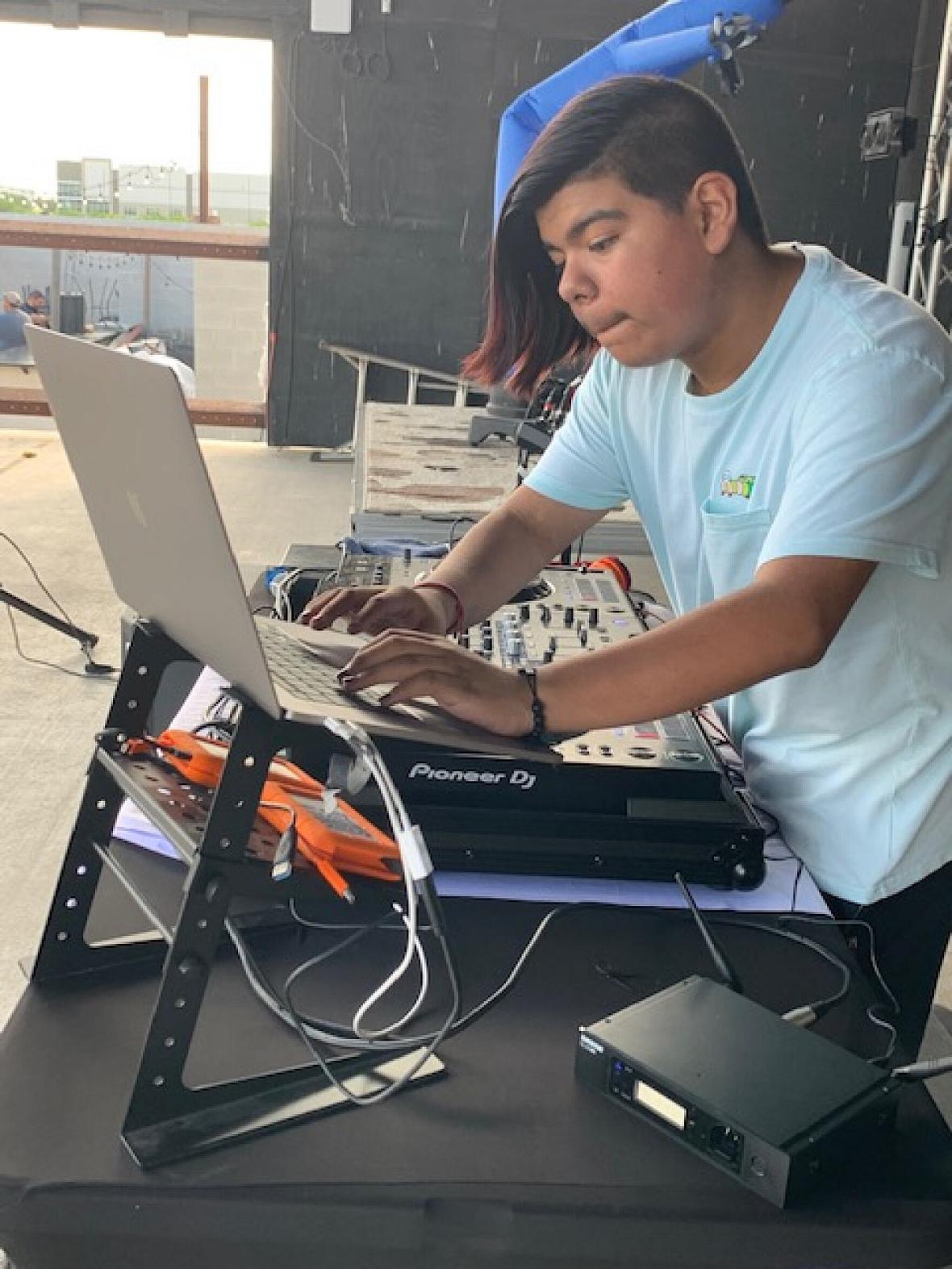Family matters in childhood Type 2 diabetes
This story is part of a larger series called Diagnosis Diabetes, made possible with a grant from the USC Center for Health Journalism's 2022 Impact Fund for Reporting on Health Equity and Health Systems.
Other articles include:
Diagnosis diabetes: A health issue that needs to be taken more seriously
A darkened neck could be a sign for Type 2 diabetes. But Texas screenings have slowed
Diagnóstico Diabetes: Un Informe Especial
Diagnóstico Diabetes: Un Informe Especial

DJ Axe6, 14-year-old Abram Estrada, was diagnosed with type 2 diabetes in early 2021.
Yvette Benavides / Texas Public Radio
An American is diagnosed with diabetes every 21 seconds, according to the National Diabetes Statistics Report. The CDC reports that more than 30 million Americans have type 2 diabetes. We often think about diabetes in terms of these staggering statistics but the disease impacts one person at a time — each with their own story.
At a recent 5K, The Cupcake Run, runners and walkers took to the streets to raise money to battle childhood brain cancer.
On the stage and hyping the crowd is DJ Axe6, 14-year-old Abram Estrada.
He says he’s really into it as he’s mixing the music and putting on a show. His exuberance is contagious as he jumps up and down and waves his arms with the beat. Because of his energetic performance, you might not guess that he lives with a chronic illness: type 2 diabetes.
“They’re just like, yeah, you have it. It’s type 2,” Abram recalled.
The diagnosis came in January of 2021. Like most kids at that time, Abram was enduring the COVID shutdown and online schooling, but also a disruption in his music career.
“I would do like shows like every weekend, like all day long type stuff. And like ever since like obviously I couldn’t go anywhere because of COVID I did like nothing 24/7. I would sleep every day the whole time,” Abram said.
He was also continuously thirsty and drank liters of sugary soda. He began having chest pains and low energy. Abram’s parents both have diabetes and they recognized the symptoms. They checked his blood sugar, his A1C.
“I was like 300 plus. And they were like, they’re like, we gotta take you to the doctor,” he said.
Abram’s mom, Cynthia de la Pena, took the news of the diagnosis hard.
“So I didn’t think that Abram would have, you know, this happen at 13 and then have your whole world kind of turned upside down,” she said.
Forty years ago type 2 diabetes in children was rare but not anymore according to Doctor Jane Lynch, a professor of pediatric endocrinology at UT Health San Antonio.
“Type one, diabetes was always called juvenile onset diabetes in the past, and type 2 diabetes was known as adult onset diabetes. This is really out the window now,” she said.
She says more and more children are being diagnosed with type 2 diabetes and they are younger and younger.
“We’ve seen down to age five years of age for type 2, which is rare, but many of our kids are in the eight to nine year range. And 50% are presenting with the workup that shows they’re type 2, usually in families with high rates of type 2 among parents and grandparents,” said Lynch.
That’s the case for Abram’s family. His parents are diabetic and his mother’s father died from the condition’s complications.
“I lost my dad in 2006. He was in his late 40s, early 50s when he passed away,” De la Pena said.
Lynch says this multigenerational aspect of type-2 diabetes in children is critical.
“Being in the womb of a mother who has type two diabetes with some high blood sugars actually alters your genes to be at higher risk for earlier onset type 2 and early onset obesity. And I think it explains this pretty rapid escalation of rates of type two diabetes and youth that we’ve seen in the last 20 years,” Lynch said.
De La Pena wants people to know that her son Abram did nothing wrong, yet here he is with type 2 diabetes and the social stigma that blames the disease on the patient.
“There’s a lot of blame and there’s a lot of shame in type 2 because you chose to eat unhealthy, you chose to have a sedentary lifestyle and gain weight. And because you chose that lifestyle, that’s basically your penance,” she said.
But when Abram was diagnosed he wasn’t obese. Up until COVID, he was active and his diet was normal for an American teen. But since the diagnosis, he’s changed his eating habits.
“They told me I had to do carb correction. I immediately adapted to it because the way I put it in my brain was if, if I eat too much, I’ll be gone,” said Abram.
Because of this Abram is off all of his medications but he recognizes that his type 2 is never going to go away. And he’s back to writing music and performing for enthusiastic crowds. He just checks his blood sugar throughout his sets. He’s dealing with diabetes without skipping a beat.
The series Diagnosis Diabetes is made possible with a grant from The USC Center for Health Journalism’s 2022 Impact Fund for Reporting on Health Equity and Health Systems.
If you found the reporting above valuable, please consider making a donation to support it here. Your gift helps pay for everything you find on texasstandard.org and TPR.org. Thanks for donating today.
[This story was originally published by Texas Standard and Texas Public Radio.]


